MODEL COURSE
Hanamaki Station
 13 minutes
13 minutes
Kenji Miyazawa Memorial Museum

Located halfway up Mt. Koshio, one of the 32 mountains called Mt. Mbeki where Kenji intended to bury the Lotus Sutra, you can get a glimpse of Kenji's world where he was involved in a variety of activities. facility. It introduces screen footage, related materials, and the creative process that leads to the creation of the work.
Detailed Destination Information 2 minutes
2 minutes
Kenji Miyazawa Fairy Tale Village
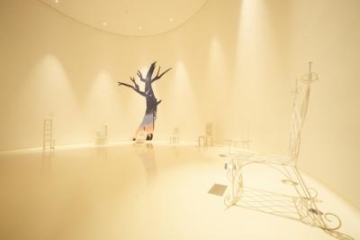
A facility where you can experience a dream-filled world based on Kenji Miyazawa's fairy tales. ``Kenji's School,'' an experience facility with five zones depicting the world envisioned by Kenji, and ``Kenji's Classroom,'' a log house exhibition facility, feature exhibits related to Kenji's fairy tales, as well as Kenji's works and Hanamaki specialties. There are also stores with a wide variety of items.
Detailed Destination Information 18 minutes
18 minutes
Hanamaki city (accommodation)
 50 minutes
50 minutes
Tono’s Story House

There is also the "Tono's Folktale Storehouse" where visitors can learn about the world of folktales, the "Kunio Yanagida Exhibition Room" where the Takazen Ryokan where Kunio Yanagida stayed and the main house where he spent his later years have been relocated, and the "Tono Theatre" where visitors can enjoy folktales and local entertainment. There is also a restaurant where visitors can taste local cuisine, making this a facility that can be enjoyed by everyone from adults to children.
Let's listen to a folktale (Folktale Storehouse)
Apr-Nov 11:00 13:00 14:00
Aug 1-Aug 31 10:00 11:00 13:00 14:00 15:00
Dec-Mar 13:00 (Sat, Sun, national holidays only)
 18 minutes
18 minutes
Tono hometown village
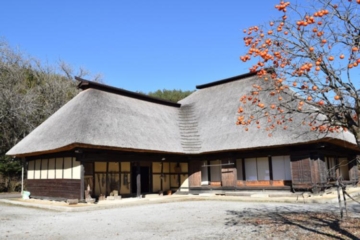
This is a place where the city's ``Nanbu Magariya'' was relocated and preserved, recreating the nostalgic farming village of Tono. You can experience various rural areas such as ``mochi pounding'', ``soba making'', and ``rope making'' in a peaceful landscape. In addition, there is a ``Maburitto'' in the hometown village who protects the culture and traditions of Tono, and they also act as instructors for rural experiences and provide gentle support.
Detailed Destination Information 10 minutes
10 minutes
tradition garden
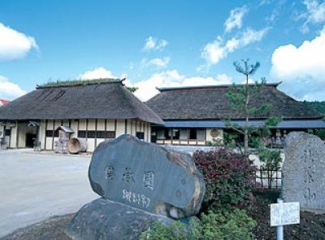
Curved houses, water mills, old tales, gods, customs, and local cuisine. The Traditions Garden is a facility that preserves and passes on to future generations the lifestyle and culture of the people of Tono, which was taken for granted in the past. Please feel the original landscape of the Japanese hometown with your eyes, ears, skin, and tongue.
At the restaurant, you can enjoy local cuisine such as "hittsumi" and "keiran. The "hittsumi" at Densetsuen, which is made with plenty of chicken bones, has a rich yet refreshing taste and is greatly appreciated by the locals.
 10 minutes
10 minutes
Kappafuchi
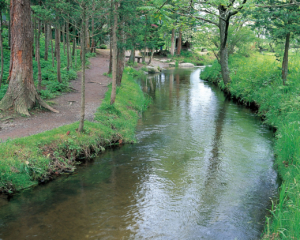
Kappa-buchi, located behind Joken-ji Temple, has clear water flowing through it and is covered with thick bushes, making it look like a kappa will appear at any moment. On the shore of the abyss, there is a small shrine dedicated to the god Kappa, and it is said that if a woman with a child makes a wish for breast milk, her wish will come true. When making a wish, it is customary to make the shape of a breast out of red cloth and place it in this shrine.
Detailed Destination Information 11 minutes
11 minutes
Tono city (accommodation)
 43 minutes
43 minutes
Hashino Iron Mine [World Heritage Site]
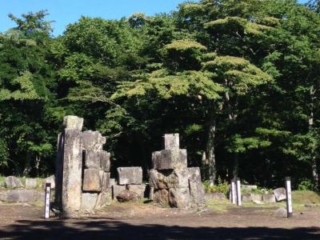
It was built between 1858 and 1858 under the technical guidance of Kato Oshima, said to be the father of modern steelmaking, and was later run by the Nanbu domain, making it the oldest Western-style blast furnace site. It has been designated as a national cultural property (historic site). In addition to the ruins of three blast furnaces, the ruins of a water mill, a shrine, a tenement house, and a mountain shrine have also been confirmed, and the remains show the operating and management conditions at the time, and are important for the modernization of the steel industry in Japan. As a symbolic historical site, its value is extremely high. On April 3, 1981, it was recognized as a historical heritage by the American Metals Institute and received the "Historical Landmark Award." On July 5, 2015, "Sites of Japan's Meiji Industrial Revolution: Iron and Steel Manufacturing, Shipbuilding, and Coal Industry," including the Hashino Iron Mine (Hashino Blast Furnace Ruins and Related Sites), was announced at the 39th World Congress held in Bonn, Germany. It was registered as a World Heritage Site by the Heritage Committee.
Detailed Destination Information 52 minutes
52 minutes
iron history museum
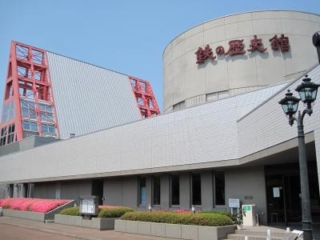
This is an iron museum unique to Kamaishi, the birthplace of modern steel manufacturing in Japan. A comprehensive performance theater that introduces the history of iron manufacturing in Kamaishi with sound, light, and video, centering around a model of a blast furnace that has been restored to full size, as well as visual equipment such as 3D images of the steelmaking process at the time and a computer-based Q&A about iron are also installed. You can enjoy learning about the history of iron. You can see a panoramic view of Kamaishi Bay from the observation terrace. A gas lamp related to Takato Oshima has been installed. The Iwate Prefecture City Gas Association donated a gas lamp (approximately 4m high) to Kamaishi City, which has been installed and lit in front of the entrance of the Iron History Museum. At dusk, the gentle light unique to gas lamps creates a magical atmosphere. [Origin of gas lights] Gas lights were first used as street lights in the 5th year of Meiji when they were installed by Kaemon Takashima in the foreign settlement in Yokohama, but 17 years earlier, in 2nd year of Ansei. It is said that gas lamps in Japan originated when Takato Oshima, who is said to be the father of modern steelmaking, used the coal gas generated in the process of making coke from coal for lighting.
Detailed Destination Information 7 minutes
7 minutes
Kamaishi Station




